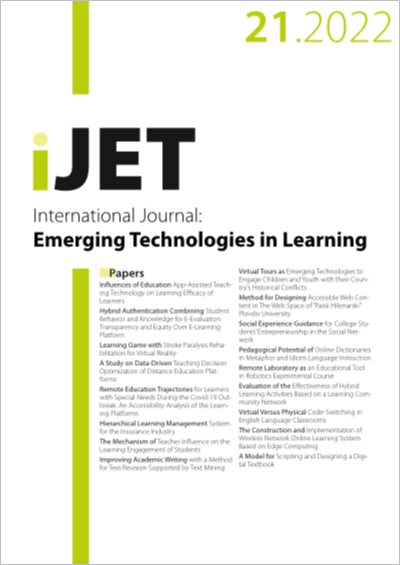Virtual Versus Physical Code-Switching in English Language Classrooms
DOI:
https://doi.org/10.3991/ijet.v17i21.32147Keywords:
code-switching, English language classroom, face-to-face classroom, virtual classroomAbstract
This study aimed to investigate the students’ perceptions serving as a mirror reflecting what they perceived concerning whether applying the pedagogy of code-switching by the teacher and the students themselves was effective in both face-to-face and virtual setting English classrooms in comparison. The participants of this study were 114 English as a foreign language undergraduate student with their first language was Thai attending the fundamental English subject at a comprehensive university in Thailand for two semesters. They have attended the face-to-face classes in the first semester and the virtual setting classes in the following semester. The tools implemented to collect the data were the distribution of questionnaires online with the open-ended questions together with the classroom observation. The findings showed that applying the code-switching in the language classrooms was advised for only some specific setting and reasons as applying this strategy was perceived less necessary by the students either using the technique by the students themselves or by the teachers in the nowadays virtual classroom setting though it was considered as a natural phenomenon occurring rather often both in a class and in a normal situation. As an educator, applying this pedagogy should be carefully considered for making it most beneficial for the students.
Downloads
Published
How to Cite
Issue
Section
License
Copyright (c) 2022 HAMBALEE JEHMA

This work is licensed under a Creative Commons Attribution 4.0 International License.



